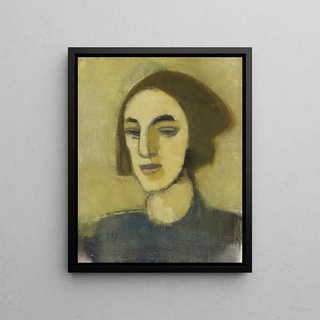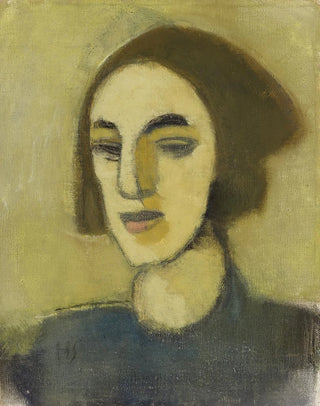Art print | Daughter of Loviisa - Helene Schjerfbeck


View from behind

Frame (optional)
Helene Schjerfbeck’s "Fille de Loviisa" is a piece that transcends mere portraiture to immerse viewers in a universe of delicacy and emotion. Painted in the early 20th century, this artwork bears witness to an era when art began to break free from academic conventions to explore more intimate and personal dimensions. The depiction of a young girl, both innocent and introspective, invites deep contemplation. Her delicate facial features, slightly averted posture, and the subtle surrounding light create an atmosphere that is both serene and unsettling. This painting is an invitation to reflect on the passage of time and the fragility of youth.
Style and uniqueness of the work
The originality of "Fille de Loviisa" lies in Schjerfbeck’s distinctive style, which combines a figurative approach with modernist sensibilities. The chosen colors, soft and pastel, evoke a dreamlike ambiance, while the slightly blurred contours of the forms convey a desire to capture the very essence of being rather than adhere to a realistic representation. The artist, through her painting technique, manages to create an emotional depth that resonates with the viewer. Every brushstroke seems charged with a story, an emotion, inviting each person to project their own memories and reflections onto this enigmatic figure. Schjerfbeck does not merely seek to represent but to evoke, to make felt.
The artist and her influence
Helene Schjerfbeck, an emblematic figure of Finnish art, established herself through her unique style and artistic vision. Born in 1862, she experienced artistic periods marked by upheavals both personal and societal. Her work is often associated with expressionism and symbolism, but she also incorporated elements of modernism, making her a pioneer in the field of art. Her ability to explore the human psyche through portraiture is one of her major contributions to art history. By moving away from conventions, Schjerfbeck

Matte finish

View from behind

Frame (optional)
Helene Schjerfbeck’s "Fille de Loviisa" is a piece that transcends mere portraiture to immerse viewers in a universe of delicacy and emotion. Painted in the early 20th century, this artwork bears witness to an era when art began to break free from academic conventions to explore more intimate and personal dimensions. The depiction of a young girl, both innocent and introspective, invites deep contemplation. Her delicate facial features, slightly averted posture, and the subtle surrounding light create an atmosphere that is both serene and unsettling. This painting is an invitation to reflect on the passage of time and the fragility of youth.
Style and uniqueness of the work
The originality of "Fille de Loviisa" lies in Schjerfbeck’s distinctive style, which combines a figurative approach with modernist sensibilities. The chosen colors, soft and pastel, evoke a dreamlike ambiance, while the slightly blurred contours of the forms convey a desire to capture the very essence of being rather than adhere to a realistic representation. The artist, through her painting technique, manages to create an emotional depth that resonates with the viewer. Every brushstroke seems charged with a story, an emotion, inviting each person to project their own memories and reflections onto this enigmatic figure. Schjerfbeck does not merely seek to represent but to evoke, to make felt.
The artist and her influence
Helene Schjerfbeck, an emblematic figure of Finnish art, established herself through her unique style and artistic vision. Born in 1862, she experienced artistic periods marked by upheavals both personal and societal. Her work is often associated with expressionism and symbolism, but she also incorporated elements of modernism, making her a pioneer in the field of art. Her ability to explore the human psyche through portraiture is one of her major contributions to art history. By moving away from conventions, Schjerfbeck






